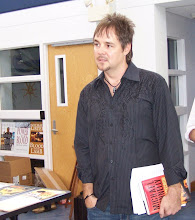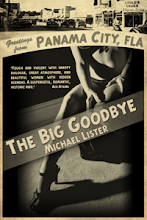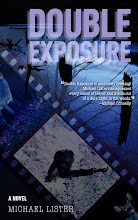
The film editor of Crime Spree Magazine, Jeremy Lynch, asked me to contribute an essay to a series he’s running about guilty pleasures.
After I agreed to do it and began to think about it, I realized I don’t really have any. Guilt, like shame and fear and envy and hate, is a negative, mostly useless emotion. I experience remorse when I realize I’ve been wrong (which is often) and do my best to take responsibility for it, repent, and attempt to rectify the situation. But I associate guilt with feelings produced by cultural and parental programming, voices of shame inside us that don’t lead to change, but only to continual condemnation.
I’m in no way saying I never feel guilt. I do—even the negative, waste-of-time kind. But I do my best to identify it and eighty-six it as quickly as possible.
I live a very deliberate life—one, as much as possible, from my soul, by my design, based on my callings and convictions, not those of the culture around me. In this, I feel a deep kinship to Emerson, attempting to be and not conform, to, as he said, “Be, and not seem.”
Given this, and my conviction that, as Emerson said, “genuine action will explain itself,” I try neither to do anything because of how it looks or apologize for anything I do—and this includes movies. But, when thinking of guilty pleasures two genres come to mind—romance and horror.
I don’t feel guilty about the films I enjoy in either genre because I’m very selective, but both genres seem to have an inordinate amount of inanity and insipidity, movies deserving of the guilty pleasure moniker.
For my not-so-guilty “guilty pleasure,” I choose a new horror movie.
Last Thursday I drove over and took my soon to be twenty-one year old daughter to the midnight showing of “Scream 4.”
And you’re thinking, surely I should feel guilty about that, right? Well, I don’t. Not even a little. And here’s why: Not only is “Scream 4” a smart, funny, self-conscious, suspenseful meta-art masterpiece, but well-made suspense-based horror movies are something I’ve used to connect with my daughter since her early adolescence when I had to tell her what parts to close her eyes during.
In the fourth “Scream” installment, Sidney Prescott, now the author of a self-help book, returns home to Woodsboro on the last stop of her book tour. Unfortunately, Sidney’s appearance also brings about the return of Ghostface, putting Sidney, her old friends, Gale and Dewey, along with her teenage niece Jill and her friends, in danger.
I don’t care for horrific or shocking images, don’t like to be subjected to what has come to be known as the torture porn. But I do love suspense—the art of “Psycho,” the German Expressionism and relentless tension of the original “Halloween”—the Hitchcockian brand of anxiety that causes an audience to forget to breathe. And I appreciate smart, well-written scripts. “Scream 4” has a bit of both of these—along with humor and hipness to spare.
Like the original, and to a lesser extent the other two sequels, “Scream 4” works on a lot of levels, but is perhaps at its best when exploring genre. It not only looks at horror genre conventions in general, but at the micro sub-genre of “Scream” itself. At one point I thought, I’m sitting in a theater watching a movie in which kids inside a movie are watching a movie based on a movie based on a book based on a movie—and in the process the characters are not only talking about the other movies, but the one they’re in.
If you like smart, hip, fun, suspenseful horror with all of the pleasure and none of the guilt, treat yourself to “Scream 4.”













